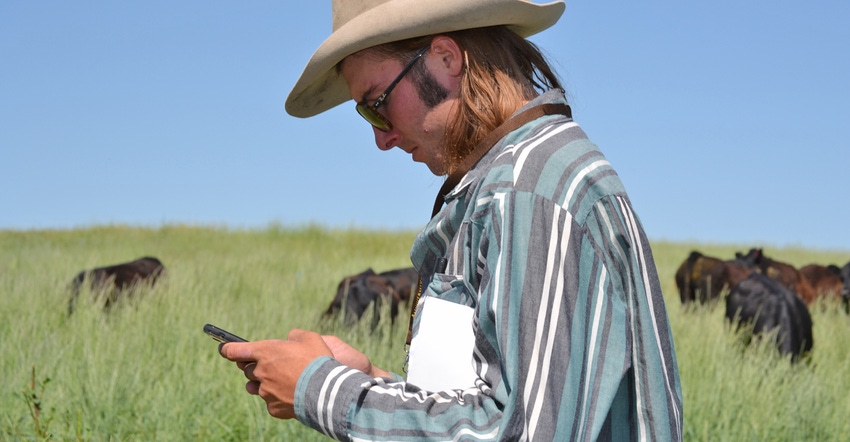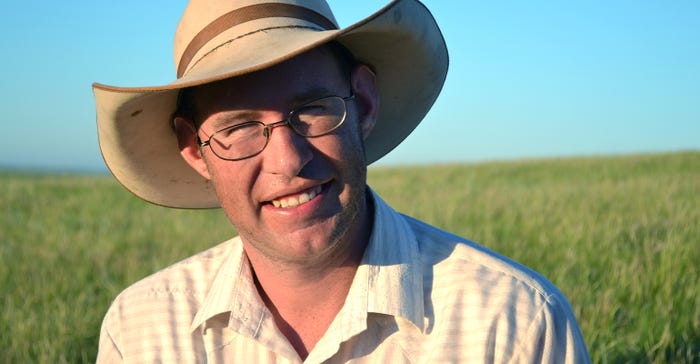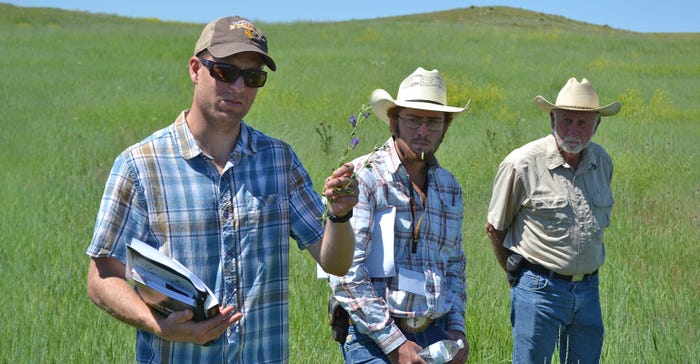August 30, 2019

Sage and Faith Askin and brothers Kellen and Cameron Smith have two things in common despite operating ranches nearly 200 miles apart: They are passionate about raising cattle and ranch in areas with high cheatgrass populations.
They have one other thing in common. As many progressive livestock producers across the West do, they know that by reducing cheatgrass and other weed problems with planned grazing, they’ll boost their lands’ productivity.
“This area of Wyoming is bad for cheatgrass,” says Sage Askin, who raises cattle and sheep south of the small High Plains town of Lusk. “Weeds occur because you create conditions for them to occur. Disturbance can lead to big problems, and among the disturbances is grazing that is not well planned.”
The Askins know that they must manage grazing carefully, because all of their lands are leased from property owners specifically looking for good land stewards.
“By managing holistically, weeds haven’t been a big problem for us,” Askin says. “The more you graze correctly, the more the weeds get outcompeted.”
The Askins use an intensive rotation grazing system, relying on quick moves (sometimes as short as one day to every three days) through pastures during the active growing season. They allow ample rest time to allow desirable grasses and forbs to recover.
Since cheatgrass is one of the first plants in the spring to green up, the Askins use targeted grazing to hit this annual noxious weed hard before it goes to seed, which has reduced the seed bank and opened up areas for native plant regrowth.
“We have a very good, healthy stand of both cool- and warm-season grasses,” Askin says. “We are finding that healthy pastures outcompete cheatgrass.”

HOME ON THE RANGE: Eastern Wyoming rancher Sage Askin works diligently to improve rangelands and pastures — in part, because his landlords were seeking tenants who would care for their properties as much as they do.

Detailed grazing plan key
Meanwhile, 200 miles away, siblings Kellen and Cameron Smith manage a large cattle operation in northeast Wyoming, near Gillette. They have some ownership in the ranch, which is a multifamily corporation. That means a lot of eyes are watching what they’re doing.
“Our ultimate goal is to improve rangeland health, produce more grass and run more cows; and we’re doing this by decreasing pasture sizes, increasing stock densities and moving cattle every one to two weeks — while before, it was continuous grazing for 30 to 50 days,” Kellen says.
Cameron notes that they have developed a detailed grazing chart, and early each year they plan the grazing for the next 12-plus months.
“We don’t want to graze the same pasture year after year at the same time, and putting things down on paper has helped us track things better,” Cameron says. “In some cases, what we had on paper was telling us an area had been grazed too long.”
He adds that doing more frequent moves and adding rest periods to pastures is improving both the production and health of native cool-season grasses in the area.
The brothers have empowered their ranch hand, Tom Ford, with part of the decision-making. “We are now using high-intensity grazing for shorter periods, running up to 1,200 cows in one bunch,” says Ford, who has attended grazing classes with his two bosses, including a four-day Management-intensive Grazing School taught by Jim Gerrish. “We’re seeing a lot of new growth — mostly desirable cool-season grasses — in places we didn’t see before.”
The two brothers and their ranch hand, Ford, remain confident that with planned grazing, the desirable grasses will begin to overcome cheatgrass and other undesirable plants.

PLANT ID 101: Correctly identifying plants is critical to improving forage resources and managing weeds, says University of Wyoming Extension Educator Brian Sebade (left) here helping to teach a Management-intensive Grazing workshop led by Jim Gerrish (right). In the center is northeast Wyoming rancher Tom Ford.

Know your plants
Brian Sebade, a University of Wyoming Extension educator who specializes in agriculture and horticulture, says that correct plant identification is one of the key steps to managing ranchlands successfully.
“Knowing what plants you have on your property is important for making management decisions,” Sebade says. “Correctly identifying what plants are desired or undesired can have major implications for an agriculture operation.”
He adds: “There is a wide assortment of plants we find in pastures and rangelands in Wyoming and across the West. Some of these plants can be extremely high in nutrients for livestock, while others may have very little nutritive value or be poisonous to livestock.”
When it comes to weed identification, an outstanding guide is Weeds of the West, which is available for free as a download on the University of Wyoming Extension website.
Resources to beat the 'cheat'
There are many good resources to help ranchers better manage downy brome, also known as cheatgrass. Among them are:
• The Cheatgrass Management Handbook, published by the University of Wyoming and Colorado State University
• How to beat the cheat, by Donald Shoderbek, Colorado State University range specialist
• Management of cheatgrass in rangelands and pastures, by Steve Young, former faculty member of the University of Nebraska-Lincoln’s West Central Research and Extension Center,
• Cheatgrass: identification, biology and integrated management, published by Montana State University Extension
Waggener writes from Laramie, Wyo.
About the Author(s)
You May Also Like




